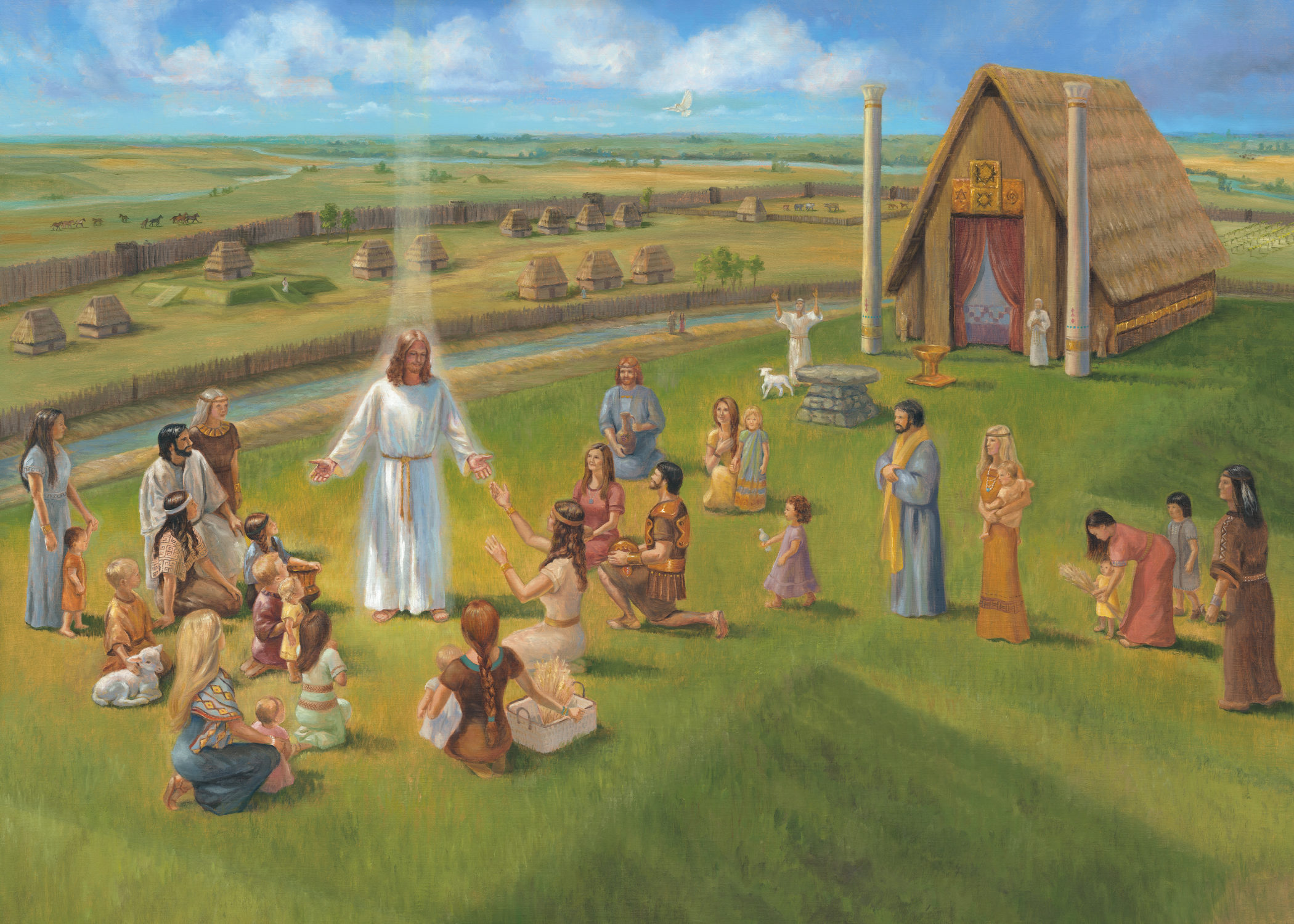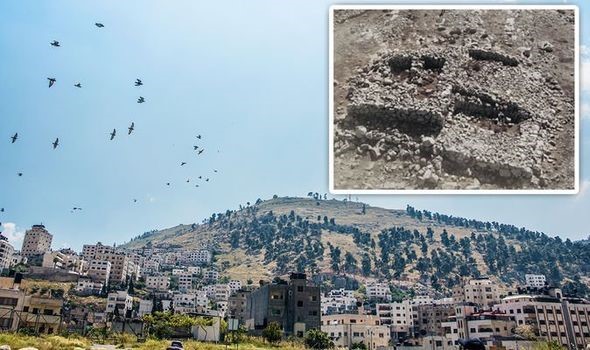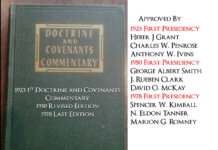As a reader of the Book of Mormon, it is essential to understand the Old World and the Jewish Customs and Laws. We know the Nephites practiced the Law of Moses. Looking in Israel and in North America for similar practices amongst the Jews and the Nephites is critical.
We don’t find connections in Central America to those customs of the Hebrews and Israelites. Mesoamerica obviously contains an Asian race of people, not an Israelite race. We find hewn stone, tropical forests, Jaguars and Jade and monkeys. No wheat or barley, wine, lambs, bullocks, doves, rams and no elephants, mastadons horses etc. North America has all of these animals and items. This is an amazing inditement of where the Book of Mormon events happened. See my detailed article hereabout the Law of Moses:
3 Essential Truths about Nephite Observance of the Law of Moses
“First Truth: Not only did the Nephites “strictly” keep the law of Moses (as indicated in 37 verses in the Book of Mormon (see Alma 30:3, Mosiah 13:29-30, Jarom 1:5), but they did so with delight as it was seen by them as both a collection of types of Christ and a means of coming unto Him. Occasionally even the Lamanites were known to “strictly” observe the law (Hel. 13:1). Second: In “observing to keep the commandments of the Lord in all things, according to the Law of Moses” (2 Ne. 5:10), the Nephites would have necessarily observed all the feasts or “holy days” given to Moses by Jehovah. These are recorded in Exodus and Leviticus and are known as “holy convocations” or “rehearsals” and they typify the life and mission of Jesus Christ in profoundly beautiful ways. Third: It was absolutely essential for these Jewish Lehites to be brought to a land that would provide an abundance of all the plants and animals required to keep the Law of Moses, with its concomitant Holy Days or festivals. Based on the latest archeological findings, it can now be irrefutably shown that the Heartland of North America is the only location in the Western Hemisphere where all ten of the essential items were found anciently including; lambs, oxen, goats, doves, barley, wheat, grapes, and altars made of stacked, unhewn stones. These aforementioned items have not been found in the archaeological record of the pre-Columbian peoples of Mesoamerica.” Amberli Nelson MBA Hebrew/Jewish Symbology Expert
“An altar of earth thou shalt make unto me… in all places where I record my name I will come unto thee, and I will bless thee. And if thou wilt make me an altar of stone, thou shalt not build it of hewn stone: for if thou lift up thy tool upon it, thou hast polluted it. Neither shalt thou go up by steps unto mine altar…” Exodus 20:24 – 26
There is a temple mound situated above the Ohio River near Cincinnati. “Fragments of burnt limestone may still be seen on the top. The mound is a rectangle two hundred and twenty-five feet long by one hundred and twenty feet broad, and seven feet high.” In contrast to the hewn stone buildings and altars of Mexico, the Ohio mound has the right dimensions to have accommodated a timber and burnt lime plaster (“cement”) building of the size and proportions of Solomon’s Temple.” J. P. Maclean, The Mound Builders – Archaeology of Butler County, Ohio, 1904, pp. 222-223.
“Few realize that some of the oldest, largest and most complex structures of ancient archaeology were built of earth, clay, and stone right here in America, in the Ohio and Mississippi valleys. From 6,000 years ago until quite recently, North America was home to some of the most highly advanced and well organized civilizations in the world – complete with cities, roads, and commerce.” Dr. Roger Kennedy, former director of the Smithsonian’s American History Museum

“This painting above shows Christ descending in a shaft of light to visit multitudes of Nephites who are streaming up a ramped earthen platform mound reminiscent of other earthen monuments made by the civilization now known as the Hopewell Mound Builders. The background is a vast plain with interspersed massive grass-covered mounds, wooden homes with thatched roofs and hardwood forests, while the foreground shows a large wooden temple atop a monumental ramped earth structure. The scene is one that is true to the Book of Mormon record, without stone pyramids or thick jungle vegetation since nowhere in the text is there any mention of stone buildings, palm trees, monkeys or a tropical climate.
The Heartland geography research has overwhelmingly demonstrated through Book of Mormon prophesies, Joseph Smith’s writings, DNA, archaeological, linguistic and cultural evidences that the most likely location for the setting of the Book of Mormon was in America’s Heartland. This painting is consistent with Joseph Smith’s known and historically documented statements and actions in such accounts as the those found in D&C 28, 30, and 32, the Wentworth Letter, the American Revivalist account, the Zelph accounts, Joseph’s hand-written letter to his wife while on Zion’s camp, and many additional sources.” Rod Meldrum, Author “Exploring the Book of Mormon in America’s Heartland”
Contrasting the works of the mound builders with Mesoamerica stone ruins, Hugh Nibley observes: “A closer approximation to the Book of Mormon picture of Nephite culture is seen in the earth and palisade structures of the Hopewell and Adena culture areas than in the later stately piles of stone in Mesoamerica… Though such piles as the great pyramid-temple of Chichen Itza are surpassed by few buildings in the world in beauty of proportion and grandeur of conception, there is something disturbing about most of these overpowering ruins… The great monuments do not represent what the Nephites stood for; rather they stand for what their descendents, mixed with the blood of their brethren, descended to…” Hugh Nibley, The Prophetic Book of Mormon, pp. 272-273
A Friend Jerrod Wertman Writes,
“In 1980, Professor Adam Zertal, the late Israeli archaeologist, was conducting a detailed archaeological survey of northwestern Samaria. He found a massive altar of burnt offerings dating to the biblical period of the judges. (Deut. 27)
“At first, his findings (archaeologist Adam Zertal) sparked a scholarly firestorm of disagreement, but today it’s generally recognised he did find a cultic site that corresponds to biblical sacrificial restrictions. The altar is made of natural uncut stones (Joshua 8:31,Ex 20:25) and filled with alternating layers of Earth, ash, bone and stone.
Not only is this a known construction style of ancient altars, but the bones are also ritually clean edible animals, pointing to the use as an Israelite cult centre. Unlike pagan altars with stairs, (Ex:20:26) this one was ascended via a ramp, as commanded in Exodus 20
While this is certainly information you already know, I believe it both gratifying and vindicating to have a non-LDS scholar make such matter-of-fact statements that utterly disqualifies ALL of the Mayan, Incan and Aztec temples from being Nephite temples.
This non-invested scholar makes a simple statement of fact that, almost in passing, that was/is common knowledge amongst the Jews: Any temple that has stairs leading up to the altar is Pagan. Period. It cannot be Israelite, and what’s more, the altar itself HAD to be made of natural, uncut stones, according to the requirements given by Jehovah.
All of the the central or South American temple altars are of carved/hewn stone, and according to Mosaic law, are constructed of “defiled”, ritually impure materials. Hence, unfit for worship and sacrifice.
I just wonder how much longer the Meso crowd will ignore such painfully obvious evidence such as this, and take an honest look at where the overwhelming preponderance of evidence actually is.
I have looked at many reconstructed models of this temple mount/altar, and they look so much like the mound builder temple sites.
If you just examine what has been legitimately identified as a genuine Israelite altar and compare it to both the Mayan pyramid temples and the Hopewell temple sites, even a child could pick which one is most likely a Nephite temple site.
I just feel these MesoAmerican BOM scholars are being intellectually dishonest by pointedly avoiding this particular discussion.
I’ve never even heard of this information from anyone at any church seminary, education week, or anything.
I honestly think that the most damning evidence against MesoAmerican BOM Geography is that “Strictly observing” the law of Moses was an impossibility. No wheat, no grapes, no barley, no sheep?! C’mon, guys! They may have been a once mighty civilization, but there ain’t no WAY they were Nephites!” All the best, friend, Jerrod Wertman
Below is more from archaeologist Adam Zertal
Archaeology shock: 2,000-year-old Mount Ebal discovery ‘proves Bible story’

“The Book of Joshua, found in the Bible, tells of how one of Moses’ assistants who built an altar of stones where the Israelites made peace offerings. Much later in the book, when Joshua was old and dying, he gathered the people together at Shechem, and gave a farewell speech. In the Eighties, archaeologists Adam Zertal conducted a land survey in Manasseh, including Mount Ebal, where the team identified an anomaly 150 metres below the peak.
“Secondly, Mount Ebal is the tallest mountain in northern Samaria, demonstrating the importance and commanding a view of nearly all of what would become Israel.

“Also, most Israelite Iron Age archaeological findings come from this territory of Manasseh where Mount Ebal is.”
The series went on to reveal why biblical scholars think there is a link with Joshua’s story and the altar.
It adds: “This gives some evidence to believe that here is where most of Israel resided in the early settlement and into the time of the judges, so a religious centre on Mount Ebal would give access to most of these Israelites.
“After these mentions in Deuteronomy and Joshua, Mount Ebal is never mentioned in the Bible again.
“But, in modern times, Mount Ebal has been the centre of controversy with the findings of the late archaeologist Adam Zertal.

“A pile of stones on Mount Ebal received several seasons of excavations due to Iron Age pottery scattered on its surface.
“Zertal interpreted what he found beneath the pile as a massive altar of burnt offerings dating to the biblical period of the judges.”
But, there is more evidence than just the coinciding story, the series claimed.
It continued: “At first, his findings sparked a scholarly firestorm of disagreement, but today it’s generally recognised he did find a cultic site that corresponds to biblical sacrificial restrictions.
A smaller circle could be the original altar
A smaller circle could be the original altar (Image: BIBLE DISCOVERY TV)
Some argue the rubble had other uses
Some argue the rubble had other uses (Image: BIBLE DISCOVERY TV)
“The apparent altar is made of natural uncut stones and filled with alternating layers of Earth, ash, bone and stone.
“Not only is this a known construction style of ancient altars, but the bones are also ritually clean edible animals, pointing to the use as an Israelite cult centre.
“Unlike pagan altars with stairs, this one was ascended via a ramp, as commanded in Exodus 20.
“While the altar dates to a time after Joshua, Zertal found at the centre of it, an older circular altar dug into the bedrock.
“Could this be Joshua’s construction? The location, timing and archaeological all line up.”
Though some archaeologists agree with the consideration that the site was an altar compound, and some that it was a cultic location, others believe that it was simply a farmhouse, a guard tower.
They argue that the paved areas are simply rooms, the sloping wall simply an eroded partition wall, and the infilled enclosure a room that was later changed into a tower.”
No Tools to Cut Stone-Hebrew Law

The first Nephite Temple would be built on the highest point of the Nephite settlement. (Painting above represents Lookout Mountain above Moccasin Bend on the Tennessee River). It would be facing directly east symbolic of The Savior’s coming. It was to be built like Solomon’s. The altars of the temple were made of stacked stone, not hewn stone. “The word in Exodus 20:25 which is translated as ‘tool’ is the Hebrew חרב which most literally means ‘sword’. There explains that a sword is designed to shorten life, while an altar is designed to lengthen life by being used to achieve atonement. It makes sense, therefore, that one should not be used in the formation of the other.” Rashi, Medieval French Rabbi.





